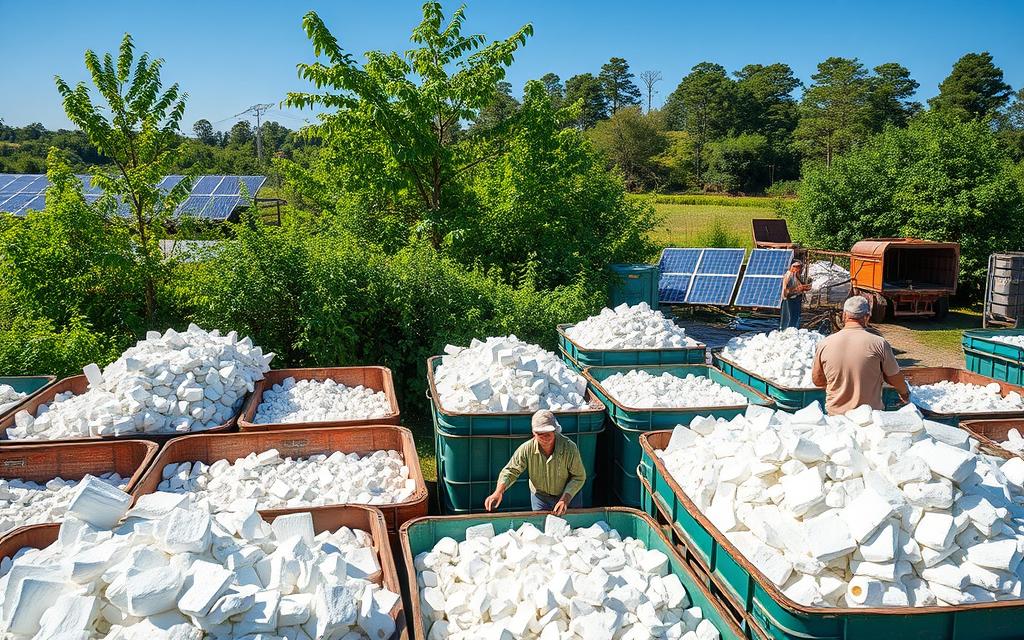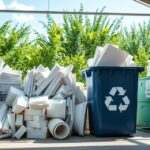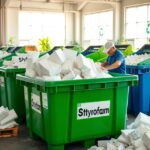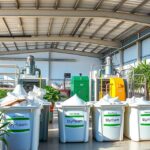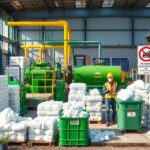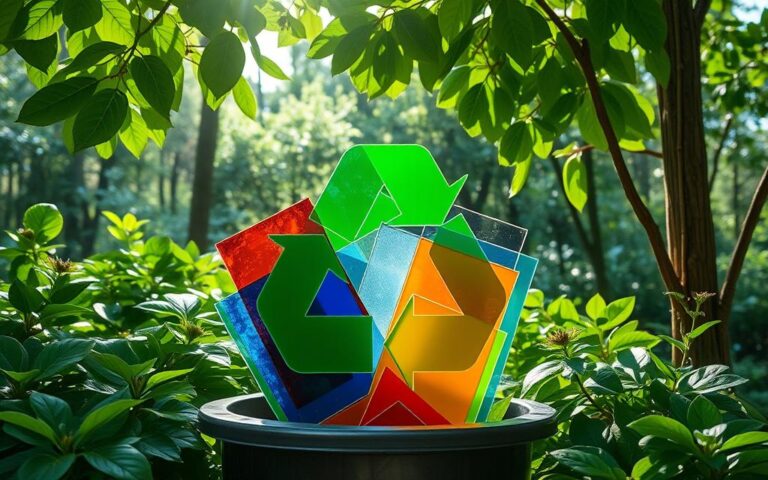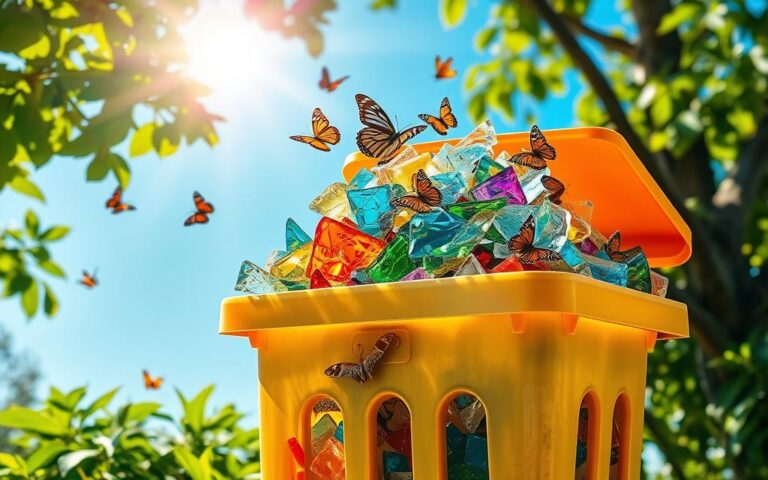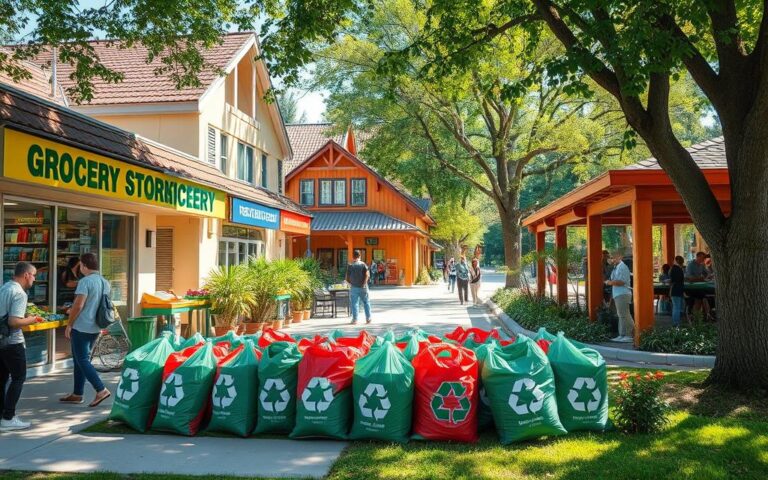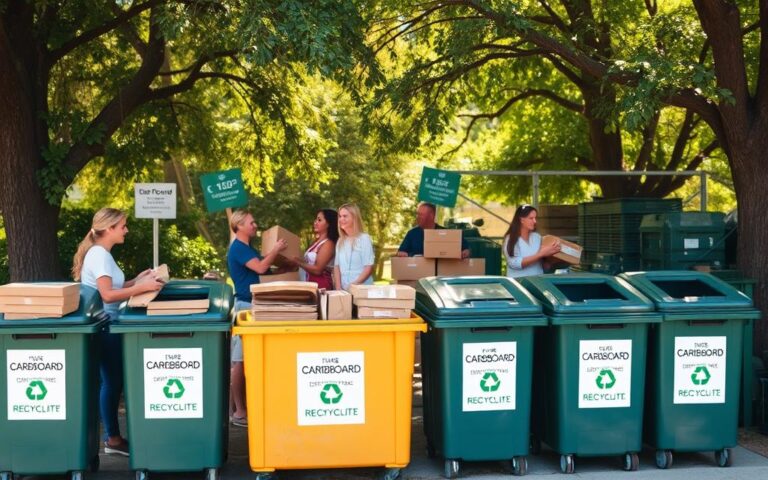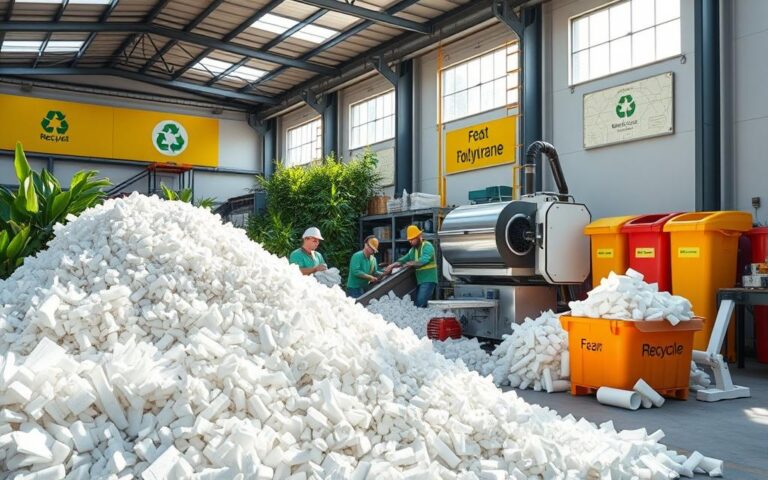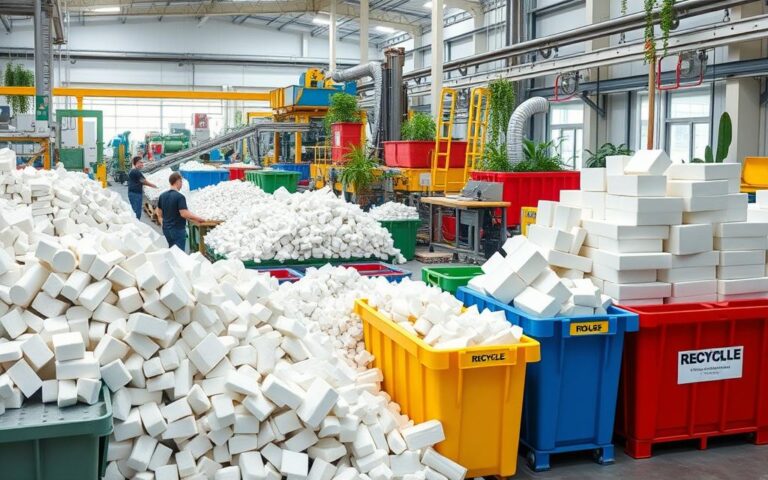Can Styrofoam Be Recycled? Eco-Friendly Solutions
Are we able to recycle Styrofoam without harming our planet? Known for its lightness and ability to keep things warm or cold, Styrofoam is everywhere. We see it in packaging and food containers. Yet, we’re left wondering if we can recycle it effectively and in an eco-friendly way. With it taking up to 1,000 years to degrade, it’s important to know how to dispose of it properly.
Recycling Styrofoam can be tough due to contamination and a lack of demand for recycled materials. As we aim for a sustainable future, finding new ways to recycle and alternative solutions is key. This article looks into how Styrofoam is made and its impact on the environment. We will see how this material might become more eco-friendly.
Key Takeaways
- Styrofoam, or expanded polystyrene, poses significant recycling challenges due to contamination.
- It takes hundreds to thousands of years to fully biodegrade, creating long-term environmental issues.
- Cost-effective solutions and sustainable alternatives are important to reduce reliance on Styrofoam.
- Only a small fraction of Styrofoam can be effectively recycled, often leading to low-value products.
- Growing awareness and innovation are driving demand for eco-friendly substitutes to Styrofoam.
Understanding Styrofoam and Its Uses
Styrofoam, also known as expanded polystyrene (EPS), is unique because of its composition of Styrofoam. It’s mostly air, over 90%, which makes it light and bulky. This special mix gives it great insulation properties and many uses.
Composition of Styrofoam
The composition of Styrofoam is mainly air, about 98%, and 2% polystyrene, which comes from oil. This mix is perfect for keeping temperatures steady, which is useful in many situations. However, making and getting rid of Styrofoam can harm the environment.
Common Applications of Styrofoam
The applications of Styrofoam cover a wide range. It’s used in:
- Disposable food containers
- Coffee cups
- Egg cartons
- Packing peanuts
- Insulation in houses
These uses of Styrofoam show how handy it is but also point out a problem. Most of these items are used once and then thrown away. This creates a lot of waste, and recycling Styrofoam is hard. We need to find solutions for these environmental concerns.
Can Styrofoam Be Recycled?
People often wonder if Styrofoam can be recycled given our growing environmental worries. Yes, there are ways to recycle this material, but big challenges stop most local recycling programs from doing it.
Technical Recycling Possibilities
Styrofoam, also known as expanded polystyrene (EPS), can be recycled. But, because it’s made of about 90% air, it’s hard to handle in large amounts. It takes up a lot of space but doesn’t provide much recyclable material. The process to recycle Styrofoam is complex and expensive, making many places hesitant to accept it.
To be recycled, Styrofoam must be clean and marked as number 6 plastic. However, many curbside recycling programs don’t take it. This leads to about 2.3 million tons of EPS ending up in landfills each year. Some places do recycle EPS into new products, like photo frames, but these are rare.
Municipal Recycling Challenges
Municipal recycling programs face big hurdles with EPS. Recycling Styrofoam efficiently often means taking it to special facilities. This can be costly, with shipping prices sometimes reaching up to $9 for excess EPS. Some local centers might pay $2.80 per pound for EPS with a special label, but this doesn’t cover the high costs cities face.
Because of these high costs, many places just send Styrofoam to landfills. Globally, less than 1% of EPS gets recycled. This has led to calls from environmentalists to reuse EPS packaging. To learn more about dealing with EPS, visit this resource.
The Environmental Impact of Styrofoam
To understand how Styrofoam affects the planet, we must look at its long-term impact. It doesn’t break down easily. This causes problems for wildlife and ecosystems everywhere.
Non-Biodegradability of Styrofoam
Styrofoam takes about 500 years to decompose, making it a huge waste problem. It fills roughly 30 percent of our landfills. This leads to bigger issues in managing waste and harms our environment as it lingers for centuries.
Pollution and Wildlife Concerns
Styrofoam pollution is a big problem in our oceans. About 46,000 pieces of plastic float in every square mile of sea. This endangers marine life when they eat it by mistake. The impact on health and ecosystems is huge. Cities like Honolulu and Chicago are starting to ban plastic foam to help with this issue.
Carbon Footprint in Styrofoam Production
Creating Styrofoam releases harmful substances, increasing our carbon footprint. In 1986, this industry was among the top toxic waste producers. Over 90,000 workers dealing with styrene are at risk of health issues. This highlights the need to find alternative packaging solutions.
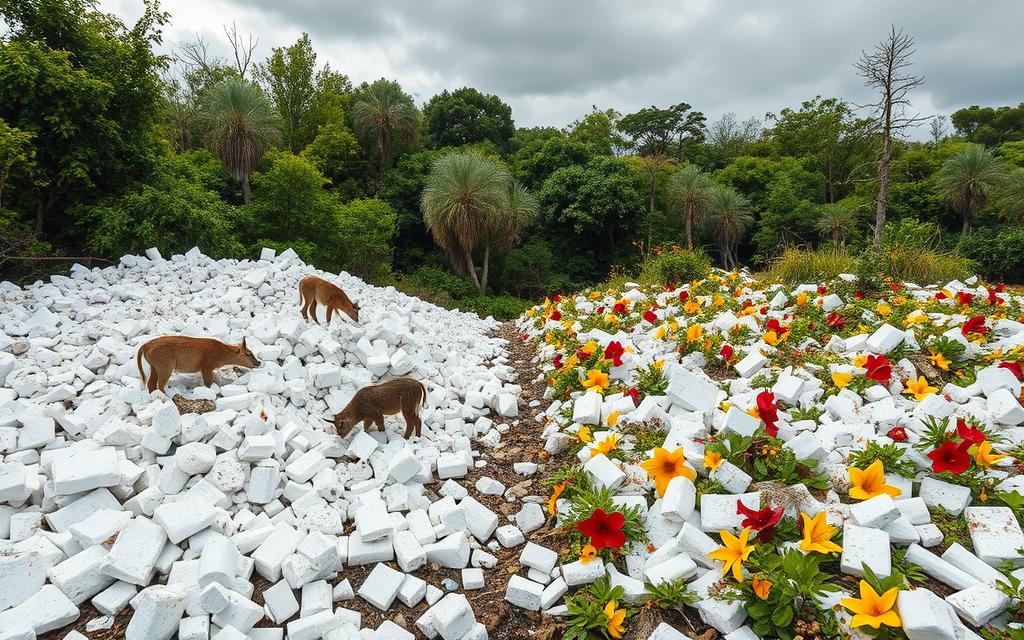
How to Properly Recycle Styrofoam
Recycling Styrofoam can be tricky but rewarding. You must know the steps involved. Here, we’ll show you how to get ready for recycling and find the right places for Styrofoam.
Preparing Styrofoam for Recycling
Cleaning Styrofoam is key before recycling. Follow these steps to get it ready:
- Clean the Styrofoam to remove food residue or contaminants. This is vital for the recycling process.
- Separate Styrofoam from other recyclables. Each plastic type needs a different process.
- Break down large pieces into smaller chunks. This helps recycling centres manage them better.
Finding Recycling Facilities
Finding places to recycle Styrofoam depends on where you live. It’s challenging because not all areas can do this. Use online resources like recyclefoam.org to help. Some areas like Kitsap County are improving how they handle Styrofoam.
Despite the challenges, it’s important to find a place to recycle. Many communities host special recycling events for EPS. These help make recycling more effective.
| Location | Facility Type | Services Offered |
|---|---|---|
| Kitsap County | Private Recycler | EPS drop-off centre (proposed) |
| Seattle | Recycling Company | EPS recycling services |
| Tillamook County, Oregon | Municipal Facility | Active EPS recycling programme |
Innovative Recycling Solutions for Styrofoam
As the worry about our environment grows, new ways to recycle Styrofoam are being found. These methods focus on advanced recycling technologies. One key method involves breaking down polystyrene on a molecular level through chemical recycling. This is important as it means Styrofoam with food on it can still be reused.
Chemical Recycling Techniques
Chemical recycling, including pyrolysis and solvolysis, is changing the way we deal with Styrofoam waste. These methods not only break the material down but also turn it into useful items like picture frames or insulation. This reduces the amount of Styrofoam ending up in landfills, where it lasts for hundreds of years and harms the environment.
Emerging Technologies in Styrofoam Recycling
While old mechanical recycling is important, we also need more chemical recycling plants. By improving facilities and raising public awareness, we can encourage better waste management. When governments and companies support recycling and create biodegradable options, we lower carbon emissions and save energy.
FAQ
Can Styrofoam be recycled?
Yes, Styrofoam, also known as expanded polystyrene (EPS), can be recycled. But, many local recycling programs don’t accept it. This is because it’s hard and not cost-effective to process and clean.
What are the main challenges of recycling Styrofoam?
A big issue is that Styrofoam is 90% air, so it’s bulky but not very valuable as a recyclable material. Also, turning it back into something useful is expensive and takes a lot of effort.
Why is Styrofoam harmful to the environment?
Styrofoam can take thousands of years to break down, leading to landfill issues. Animals sometimes eat it, which can be deadly.
Moreover, making Styrofoam releases harmful gases that damage the ozone layer.
How can I prepare Styrofoam for recycling?
To recycle Styrofoam, you must first clean it thoroughly. Any food residue should be removed. It also needs to be kept separate from other recyclable items.
This helps increase the chances that it will be recycled properly.
Where can I find local recycling facilities that accept Styrofoam?
Not every place has facilities for recycling Styrofoam. But you can find centers that do by visiting websites like recyclefoam.org. They offer information on local recycling options.
What are innovative methods for recycling Styrofoam?
Some new ways to recycle Styrofoam include breaking it down chemically. This process can tackle even contaminated Styrofoam.
Technologies like pyrolysis and solvolysis are also helping to make Styrofoam recycling more efficient.

